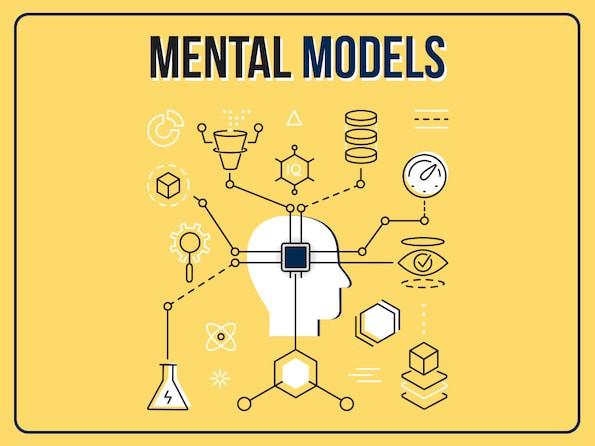Section 1: Introduction-The Skill That Separates Good ML Candidates from Great Ones
Machine learning interviews aren’t just about your models, metrics, or technical depth, they’re about how you think.
And in 2025, that’s never been truer.
When you walk into a Google, Anthropic, or Meta ML interview, your interviewer isn’t simply checking whether you can implement XGBoost or write clean PyTorch code. They’re listening to how you reason under pressure, how you unpack problems, make trade-offs, and communicate complexity with clarity.
That’s where the often-overlooked superpower of thinking aloud comes in.
Thinking aloud, narrating your thought process while solving a problem, might sound simple, but it’s one of the most underrated and transformative skills in ML interviews.
It’s what turns silence into insight.
It’s what transforms a 50–50 decision into a confident collaboration.
And it’s what allows your interviewer to see not just what you know, but how you know.
Why Thinking Aloud Matters More Than Ever
Machine learning engineering sits at the intersection of coding, statistics, data reasoning, and product thinking. That means most problems you’ll face in an interview, whether it’s optimizing a loss function, designing a recommendation system, or debugging a data pipeline, don’t have one “right” answer.
So, when you stay silent while thinking, the interviewer sees only the final result, a black box.
But when you think aloud, you open that box. You turn an isolated coding task into a collaborative problem-solving session, giving the interviewer visibility into your approach, priorities, and depth of understanding.
This is especially true in FAANG-style ML interviews, where evaluation rubrics explicitly include “reasoning transparency.”
As one Meta hiring manager described it:
“We’re not just scoring correctness. We’re assessing how candidates navigate uncertainty, justify trade-offs, and structure reasoning. Thinking aloud makes that visible.”
In other words: your voice is your edge.
What Interviewers Are Really Listening For
When you narrate your reasoning in an ML interview, interviewers are subconsciously evaluating five key dimensions:
- Problem Framing - Can you restate the problem in your own words and identify what’s actually being asked?
- Hypothesis Formation - Do you make intelligent assumptions or ask clarifying questions early?
- Structured Exploration - How logically do you test ideas or constraints?
- Trade-Off Reasoning - Can you justify model, metric, or infrastructure choices?
- Communication Under Pressure - Can you stay articulate when unsure?
In short, they’re not judging whether you’re perfect, they’re judging whether you’re coherent and methodical.
The Common Mistake: Thinking Silently
Many engineers, especially introverts or experienced coders, believe staying quiet shows focus.
In reality, silence in an interview often reads as confusion.
If you take a long pause without verbal context, your interviewer can’t tell whether you’re:
- Strategizing
- Stuck
- Or simply overthinking
That uncertainty hurts your evaluation, even if your eventual answer is correct.
Thinking aloud bridges that gap.
It replaces silence with signal.
Example:
❌ Silence for 30 seconds…
✅ “I’m trying to decide between using AUC or recall as the evaluation metric here. Since the business seems to care more about false negatives, recall might be the better choice.”
That one sentence communicates clarity, maturity, and product sense, all within seconds.
Thinking Aloud Isn’t Talking Constantly-It’s Talking Intentionally
There’s a misconception that “thinking aloud” means verbalizing every step.
It doesn’t.
Good candidates ramble.
Great candidates curate.
They narrate decisions, not distractions.
They share their rationale, not raw thoughts.
For example:
“I’m thinking of using a tree-based model here since the dataset seems mostly tabular, and interpretability might matter for business insight.”
That’s elegant, precise, and purposeful.
The Skill Behind Thinking Aloud: Metacognition
What you’re really practicing when you think aloud is metacognition, the ability to observe and structure your own thinking.
It’s the same skill top researchers and ML leads use when they present papers, explain experiments, or justify model choices to non-technical stakeholders.
And in interviews, it signals leadership potential.
Because the best ML engineers don’t just build, they explain, persuade, and collaborate.
Thinking aloud is your chance to demonstrate all three.
The Bigger Picture: Why It Matters Beyond the Interview
Here’s the secret: the reason companies like Anthropic, OpenAI, and Google value thinking aloud isn’t just about interview clarity, it’s because it mirrors real-world collaboration.
In day-to-day ML engineering, you’ll often need to:
- Justify model decisions to product managers
- Explain trade-offs to data scientists
- Discuss architecture with infrastructure teams
Thinking aloud in an interview is simply the public version of what successful engineers already do in their jobs.
It’s how you show, not tell, that you’re ready to operate at that level.
As explored in Interview Node’s guide “The Hidden Metrics: How Interviewers Evaluate ML Thinking, Not Just Code”, success in modern ML interviews is less about perfection and more about transparency, reflection, and structured communication.
Section 2: The Psychology Behind Thinking Aloud (Why It Works So Well in ML Interviews)
If you’ve ever left an interview thinking, “But my answer was correct, why didn’t I make it through?”, you’re not alone.
That frustration often comes from misunderstanding what interviewers are really trying to see during your session.
It’s not just your final code output or whether your model converges, it’s your thought process under pressure.
And that’s where thinking aloud gives you a psychological advantage that most candidates overlook.
a. Thinking Aloud Turns Invisible Reasoning into Observable Skill
Imagine two candidates solving the same ML problem at OpenAI:
- Candidate A sits quietly, types quickly, submits an efficient solution.
- Candidate B pauses, verbalizes their assumptions, discusses potential data biases, and chooses a balanced approach.
Even if both reach similar outcomes, Candidate B almost always ranks higher.
Why?
Because the interviewer can see their cognition.
Thinking aloud externalizes your internal logic, it gives the interviewer a front-row seat to your problem-solving process.
In ML interviews, that’s gold.
It helps them evaluate:
- Your mental model of how the system works
- The order in which you prioritize steps
- How you reason about uncertainty and trade-offs
Without that visibility, interviewers can only guess, and guessing rarely works in your favor.
b. It Activates the “Collaborative Mindset” Bias (In Your Favor)
Interviewers, especially ML engineers or scientists, naturally prefer candidates who feel collaborative.
When you think aloud, you subtly transform the interview dynamic from evaluation to co-creation.
Suddenly, it feels less like “you vs. them” and more like “we’re solving this together.”
That psychological shift builds rapport and trust.
When you say things like:
“I’m considering whether data leakage might be an issue here, does the dataset include post-event variables?”
You’re not just reasoning aloud, you’re inviting collaboration.
The interviewer’s brain subconsciously labels you as:
✅ “Coachability” → open to feedback
✅ “Team mindset” → collaborative communicator
✅ “Transparency” → trustworthy thinker
In a competitive ML hiring environment, these micro-signals can separate you from equally technical peers.
c. Thinking Aloud Keeps You Calm Under Cognitive Load
ML interviews test more than knowledge, they test mental bandwidth.
When you’re juggling data preprocessing, algorithmic trade-offs, and evaluation logic in your head, silence makes your stress invisible but amplifies it internally.
Thinking aloud externalizes that tension.
By narrating your thoughts, you distribute the cognitive load, freeing working memory and keeping your reasoning coherent.
It’s a phenomenon psychologists call “offloading cognition.”
In simpler terms: when you verbalize, you think better.
That’s why top-performing candidates often sound calm and logical even under pressure, they’re not bottling thoughts. They’re processing out loud.
d. It Helps Interviewers Infer Depth, Not Just Output
Every interviewer fears one thing: candidates who can code but not reason.
Thinking aloud acts as your proof of depth.
Even if your code isn’t perfect, your articulation shows whether you:
- Understand the statistical reasoning behind metrics
- Know when to simplify or scale a solution
- Can evaluate edge cases and ethical implications
For example:
“I’d start with a tree-based model to capture non-linear patterns, but given the interpretability requirements, I’d also test a logistic baseline and compare feature importance.”
This single sentence communicates modeling intuition, awareness of context, and adaptability, all in under 15 seconds.
That’s far more valuable to a hiring team than perfect syntax.
e. It Makes You Memorable in Debrief Discussions
After your interview, the panel typically meets to discuss candidates.
Here’s the secret most engineers don’t realize:
Interviewers often don’t remember exact code details, but they do remember how a candidate made them feel.
When you think aloud effectively, you leave behind impressions like:
- “They structured their reasoning well.”
- “They handled uncertainty gracefully.”
- “They communicated clearly throughout.”
These notes, often subjective but powerful, influence the final hiring decision.
A candidate who made the interviewer feel intellectually engaged tends to outperform someone who was technically fine but emotionally opaque.
f. Thinking Aloud Reduces Misjudgment Bias
Without verbal context, interviewers sometimes misinterpret your silence or approach.
You might be mentally optimizing model parameters, but to them, it can look like hesitation or confusion.
By narrating your logic, you close that perception gap.
Example:
“I’m checking whether the features have strong collinearity, that might explain why my model isn’t improving.”
That one comment transforms your pause from “stuck” to “strategically evaluating.”
g. It Signals Emotional Intelligence (EQ)
The most effective ML engineers blend technical expertise with communication empathy.
Thinking aloud, especially when structured and concise, demonstrates EQ under pressure.
It shows you can handle complex, ambiguous scenarios calmly, communicate reasoning respectfully, and invite feedback with openness.
These are the same traits that define senior engineers and tech leads at FAANG companies.
The Psychological Shortcut to Trust
Here’s the ultimate takeaway:
Thinking aloud isn’t about impressing with complexity, it’s about building trust through transparency.
When your interviewer understands your reasoning, they feel confident about how you’ll operate as a colleague.
You stop being a mystery, and start being a collaborator.
And in today’s ML job market, where technical parity is high but communication clarity is rare, that trust is the most valuable signal you can send.
Section 3: How to Practice the “Think-Aloud” Technique (Step-by-Step Framework for ML Engineers)
Thinking aloud isn’t a natural skill, it’s a learned discipline.
Many ML engineers, especially those with academic or research-heavy backgrounds, are used to working quietly, internalizing reasoning, and presenting only polished conclusions. But in interviews, polish without process is invisible.
The good news? You can train yourself to think aloud naturally, without sounding forced, nervous, or verbose.
Here’s a practical step-by-step framework used by top ML candidates (and recommended by InterviewNode mentors) to master the art of “visible thinking.”
Step 1: Start by Verbalizing Your Setup
Before you start solving anything, begin with orientation, talk about how you’re framing the problem.
When given a question like:
“Design a model to predict whether a user will churn,”
start by verbalizing your thought process:
“Okay, I’ll begin by clarifying the objective. We’re predicting a binary outcome, churn or retention, so this is likely a classification problem. I’ll also need to define what ‘churn’ means in context, since that can vary by business.”
This simple step immediately signals structure, awareness, and confidence.
You haven’t written a single line of code, but you’ve already earned the interviewer’s trust.
It shows you’re not diving blindly into implementation, you’re reasoning like an engineer.
Step 2: Narrate Your Decisions, Not Every Action
The key to effective thinking aloud is selective narration.
You don’t need to describe every keystroke. Instead, articulate the why behind key steps.
For instance:
“I’ll start with a baseline logistic regression before moving to tree-based models. This gives me a simple benchmark to measure performance gains later.”
That statement demonstrates:
- Methodical thinking
- Awareness of evaluation strategy
- Business-oriented reasoning
Avoid robotic commentary like:
“I’m importing pandas… now reading the CSV…”
That adds noise, not signal.
Your goal is clarity, not commentary.
Step 3: Use the “Reason → Action → Validation” Pattern
A powerful communication structure for thinking aloud in technical interviews is:
Reason → Action → Validation.
For example:
“Since the dataset seems imbalanced, I’ll check the class distribution first. That’ll tell me if I need to use stratified sampling or class weights later.”
This pattern does three things:
- Explains why you’re doing something
- States what you’re about to do
- Previews what you’ll check next
It makes your reasoning linear and predictable, a huge plus for interviewers trying to follow along.
You can use this structure in any ML round: data exploration, feature engineering, modeling, or evaluation.
Step 4: Use “Micro Summaries” After Each Logical Step
After completing a section, like feature selection or evaluation, summarize your observations briefly before moving on.
Example:
“So, we can see the top features driving churn are engagement time and session frequency. That makes sense intuitively, since inactive users are more likely to churn.”
These “micro summaries” show real-time reflection, a soft skill that hiring panels at companies like Amazon, Meta, and OpenAI specifically score.
They also create natural pauses that make your thinking easier to digest.
Step 5: Verbalize Uncertainty with Confidence
Contrary to what many candidates believe, it’s not bad to admit uncertainty, as long as you frame it correctly.
Instead of saying:
“I don’t know,”
say:
“I’m not completely sure, but here’s how I’d approach finding out.”
Example:
“I’m not certain which loss function would perform best here, but since we’re optimizing for recall, I’d start with focal loss and benchmark against binary cross-entropy.”
This communicates humility, adaptability, and scientific thinking.
Interviewers love that. It shows you’re comfortable with ambiguity, exactly what real ML work demands.
Step 6: Reflect Out Loud When You Debug
When something breaks, a model doesn’t converge, a metric seems off, resist the instinct to go silent while debugging.
Instead, walk your interviewer through your hypothesis and thought chain.
Example:
“Hmm, the validation accuracy is fluctuating a lot. That might mean either overfitting or data leakage. Let me check if I accidentally used future timestamps in training.”
Now your interviewer sees your diagnostic thinking, not just your frustration.
Even if you don’t fix it, you demonstrate problem-solving resilience, a major hiring signal.
Step 7: Practice with a “Thinking Aloud Mirror”
You can only refine what you can hear.
So record yourself solving mock ML problems while narrating aloud.
Then listen back and evaluate:
- Was I structured?
- Did I explain my reasoning clearly?
- Did I sound collaborative or anxious?
- Where did I ramble unnecessarily?
If possible, pair up with a friend or mentor from a platform like InterviewNode to simulate live feedback.
This helps you fine-tune tone, pacing, and flow until thinking aloud feels natural, not performative.
Step 8: Apply It Beyond Interview Prep
The best part about mastering the “think-aloud” habit is that it pays dividends beyond interviews.
In daily work, you’ll naturally start:
- Explaining experiments more clearly
- Writing cleaner documentation
- Presenting models more effectively
It builds confidence and clarity that translate directly into leadership communication, one of the most coveted soft skills in modern ML teams.
As highlighted in Interview Node’s guide “Mock Interview Framework: How to Practice Like You’re Already in the Room”, structured repetition is the single most reliable way to turn nerves into narrative flow.
So, don’t just practice coding, practice communication. Because how you say it often matters as much as what you solve.
Section 4: Common Mistakes Engineers Make When Thinking Aloud (and How to Fix Them)
Thinking aloud sounds simple enough, until you’re doing it live, under pressure, with an interviewer silently watching your every move.
Many engineers start strong but then fall into patterns that confuse or overwhelm interviewers rather than clarify their reasoning.
These mistakes are completely fixable, but only if you know what to look for.
Let’s break down the most common pitfalls ML candidates make while thinking aloud and how to correct them using real examples and behavioral insights.
a. Talking Too Much (a.k.a. the “Stream of Consciousness” Trap)
It’s easy to overcompensate when you first start practicing the think-aloud method.
You want to seem thorough and transparent, but you end up flooding the conversation with every passing thought.
What this does:
- Confuses the interviewer
- Makes it hard for them to follow your logic
- Hides your core reasoning in verbal clutter
Example of what not to do:
“Okay, so maybe I should use a neural net… or actually, maybe gradient boosting, no, wait, it depends on the dataset shape, but first I’ll normalize, or maybe not…”
The interviewer tunes out halfway through.
How to Fix It:
Be intentional. Use structured pauses and short summaries.
Follow this rule of thumb:
🎯 “Explain only the decision points, not the internal noise.”
Try this instead:
“I’m deciding between gradient boosting and logistic regression. Given that we probably care about interpretability, I’ll start with logistic regression as a baseline.”
Concise. Logical. Clear.
b. Over-Explaining Basics
Some candidates fear sounding “too simple,” so they start over-explaining trivial concepts, like what a confusion matrix is or how cross-validation works.
The problem?
You end up sounding rehearsed rather than insightful.
Interviewers already know the basics. They want to hear your unique reasoning.
How to Fix It:
Skip textbook definitions. Focus on why it matters in context.
Example:
❌ “I’ll use k-fold cross-validation, which means splitting data into k parts…”
✅ “I’ll use 5-fold cross-validation since the dataset isn’t huge, it’ll help stabilize my validation scores without heavy compute overhead.”
That shift shows applied judgment instead of rote memorization.
c. Thinking Silently for Too Long
Long pauses are natural, but unframed silence can be dangerous.
The interviewer can’t tell if you’re frozen or formulating.
How to Fix It:
Narrate your pause. Use framing statements like:
“Let me think this through for a moment.”
“I’m weighing two possible directions, one model-based, one data-based.”
This tells the interviewer you’re still engaged and methodical, not lost.
d. Sounding Defensive or Inflexible
Sometimes, when interviewers ask follow-up questions, candidates react defensively, as if being challenged.
For example:
“I used this model because it’s clearly better.”
This shuts down collaboration and suggests ego, not confidence.
How to Fix It:
Adopt the “collaborative curiosity” tone:
“That’s a good point. I picked this model for interpretability, but if scalability were more critical, I’d probably reconsider.”
This tone shift signals maturity, flexibility, and team compatibility, all high-scoring behavioral traits.
The Fix in One Sentence
💡 “Think aloud to illuminate reasoning, not to fill silence.”
When done right, it turns an interview into a shared reasoning exercise, not a performance.
When done wrong, it turns confidence into confusion.
Practicing awareness, pacing, and empathy while thinking aloud ensures you not only show your technical skills, you reveal the engineer behind them.
Section 5: Conclusion + 15 FAQs - Mastering the Art of Visible Thinking in ML Interviews
Conclusion: Your Voice Is the Signal
Machine learning interviews are no longer just technical tests, they’re communication diagnostics.
In a world where hundreds of engineers can implement the same algorithm, the ones who stand out are those who can explain why they chose it, defend how they built it, and reflect on what it means in business or ethical terms.
That’s what thinking aloud does, it makes your reasoning visible.
It transforms your inner monologue into a story that interviewers can follow, evaluate, and remember.
The truth is, most ML engineers fail interviews not because they lack skill, but because they hide their intelligence behind silence, hesitation, or over-polish.
When you start thinking aloud, clearly, confidently, and calmly, you bridge that gap.
You turn uncertainty into collaboration.
You turn performance into partnership.
And, most importantly, you turn evaluation into connection.
Because at the end of the day, every great ML interview is not a test of recall, it’s a conversation between thinkers.
So, the next time you’re in that virtual room, remember this:
“Your interviewer can’t read your mind, but they can hear your clarity.”
That clarity is your superpower.
Use it.
15 Frequently Asked Questions (FAQs) About Thinking Aloud in ML Interviews
1. Why is thinking aloud so important in ML interviews?
Because ML interviews are designed to evaluate how you reason, not just what you know. Thinking aloud helps interviewers assess your logic, structure, trade-off awareness, and adaptability in real time.
2. What’s the difference between thinking aloud and over-talking?
Thinking aloud is about explaining decisions, not narrating actions.
Example:
✅ “I’ll use F1-score since the dataset is imbalanced.”
❌ “I’m typing the code now to calculate F1-score.”
The former adds value; the latter adds noise.
3. How do I practice thinking aloud without sounding rehearsed?
Practice narrating while coding or solving real ML problems, but focus on principles, not memorized phrases.
Record yourself, listen back, and adjust tone and pacing until it feels conversational.
Rehearse structure, not scripts.
4. Should I think aloud in take-home ML assignments too?
Yes, through documentation and commentary.
Use clear markdown, comments, and README sections to explain decisions and trade-offs. It’s the written equivalent of verbal thinking aloud.
Check out Interview Node’s guide “Cracking ML Take-Home Assignments: Real Examples and Best Practices”.
5. How can I recover if I go blank mid-interview?
Simply narrate the pause:
“Let me think through the trade-off here.”
This keeps you in control and reassures the interviewer that you’re reasoning, not panicking.
Never stay silent without context, silence reads as confusion, not composure.
6. What’s the best structure to use when thinking aloud?
Follow the RAV framework:
- Reason → explain why you’re doing something
- Action → describe what you’ll do next
- Validation → reflect on what you’ll check or expect
Example:
“Since recall matters most here, I’ll adjust class weights. I expect to see improved sensitivity without major precision loss.”
7. How do I handle being interrupted while thinking aloud?
Stay calm and re-engage collaboratively:
“That’s a great question, let me finish this quick thought, and then I’ll address that.”
This projects control and composure, signaling confidence rather than defensiveness.
8. What if my interviewer seems unresponsive while I’m thinking aloud?
Don’t assume disinterest. Some interviewers intentionally remain silent to observe your thought flow.
Keep narrating naturally and occasionally check in:
“Would you like me to go deeper into the model evaluation or discuss trade-offs?”
That light touch of collaboration reactivates engagement.
9. Should I always think aloud in coding rounds too?
Absolutely. Even in coding tasks, explaining why you’re using a specific data structure or optimization shows depth.
Example:
“I’ll use a dictionary here since it provides O(1) lookups, helpful for tracking frequency efficiently.”
This is the difference between a coder and an engineer.
10. How do I think aloud in system design or ML architecture interviews?
Use layered narration:
- Start broad - define the system goal.
- Break it down - data ingestion, model training, deployment.
- Discuss trade-offs - scalability, latency, monitoring.
Narrating this hierarchy signals senior-level reasoning.
11. Can thinking aloud ever backfire?
Only if it’s unstructured or defensive. Avoid talking just to fill silence.
The key is intentional communication, not constant narration.
If unsure, pause, then resume with structure. Thoughtful silence > chaotic chatter.
12. How can I use thinking aloud to show leadership potential?
Frame decisions around impact and trade-offs.
Instead of just saying, “I’d use X model,” say:
“I’d use X because it offers interpretability, which will help the product team trust our outputs.”
That shows you think beyond code, like a future tech lead.
13. What’s the best way to get feedback on my think-aloud skills?
Use mock interviews or pair programming sessions.
Ask your peers or mentors:
- “Was my reasoning easy to follow?”
- “Did I sound structured or scattered?”
- “Did I make you feel included in my process?”
Feedback on clarity matters more than feedback on correctness.
14. How can I integrate thinking aloud into my career beyond interviews?
Make it part of your daily communication:
- Present findings using the same structured logic.
- Document decisions in code reviews.
- Narrate trade-offs in meetings.
The habit builds technical leadership visibility, people start seeing you as a thoughtful, articulate engineer.
15. What’s the ultimate sign I’ve mastered thinking aloud?
When your explanations feel effortless and empathetic.
You no longer overthink phrasing, you just naturally communicate clarity.
At that point, you’ve stopped “thinking aloud for interviews” and started thinking aloud as a professional skill, the hallmark of every great ML engineer.
Final Words: Thinking Aloud Is the New Communication Currency
If 2024 was the year of technical mastery, 2025 is the year of communication mastery in ML interviews.
You don’t win offers anymore by being the smartest, you win by being the clearest.
Thinking aloud isn’t just a hack, it’s your bridge between intelligence and perception.
It’s how you let others see your reasoning, feel your confidence, and trust your decisions.
So, the next time you open that Zoom call or whiteboard window, remember:
- You’re not performing.
- You’re collaborating.
- You’re leading the conversation through clarity.
And that’s exactly what every top interviewer, from Google to OpenAI, is hoping to find.






